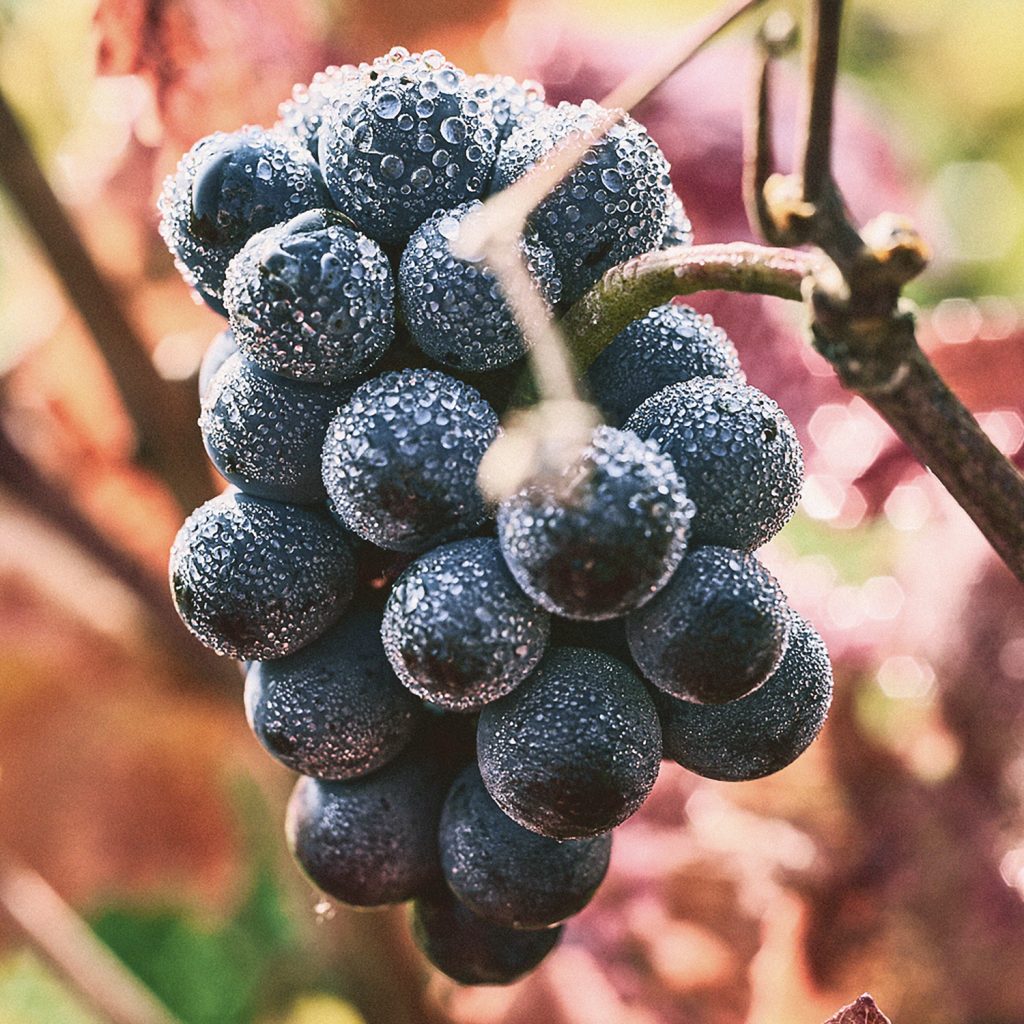Burgundy’s grapes: Pinot Noir
Author: Adam Holden

“For me, there’s no better red wine on the planet than Pinot Noir. And there’s no better place for Pinot Noir than Burgundy.” – Dominique Lafon
The differences between Burgundy’s two grape varieties go beyond mere physiology. It’s a question of personality, really. Chardonnay is easy-going and adaptable, happy to make its home where it lays its hat. Pinot Noir, simply put, isn’t – it’s fussy, finicky and difficult to cultivate.
For a vigneron to capture the essence of Pinot Noir in a wine is a balancing act, if not an outright dark art. Too ripe, and the fruit’s delicate charms are lost. Not ripe enough, and it’s lean and unforgiving.
Pinot Noir around the world
It’s perhaps because Pinot Noir is such a temperamental character that so many winemakers find themselves in thrall to it. Many have tried – with varying levels of success – to capture its essence in their own corner of the globe.
Parts of California have proven their worth; Sébastien Magnien fondly remembers his time in the Sonoma Valley. Neighbouring Oregon has become a home-from-home for both the grape and for some of Burgundy’s most famous figures – Dominique Lafon chief among them.
The Australians have found notable success in Victoria’s cool Mornington Peninsula – and considerably less of it in the Barossa Valley. Under its Italian pseudonym, Pinot Nero, it’s an important grape in Oltrepò Pavese and traditional method Franciacorta, among others. German Spätburgunder is not too shabby, either.
Burgundy: the home of Pinot Noir
Nowhere comes close to Burgundy, though. Here, the time-honoured combination of cool climate and clay-limestone soils, arranged over a meandering hillside, allow Pinot Noir to ripen slowly, preserving its finesse and balance.
“There’s no better place for Pinot Noir than Burgundy,” Dominique Lafon tells us matter-of-factly.
Growing successfully in this climate is no cakewalk, however. Pinot Noir is prone to just about every blight which can beset grapes. Its thin skin gives its wines supple tannins, but it also leaves the grape vulnerable to the elements: spring frost, rot, viruses and hail all present real threats to its survival.
The allure of Pinot
When the stars do align, a glass of Burgundian Pinot Noir which hits the right notes can be an experience like no other. You’ll know it when it happens. You’ll suddenly become aware that you’ve had your nose in the glass, inhaling the heavenly fruit and discovering its nuances, for 10 minutes – without having taken a single sip.
In their youth, the wines beguile with their bright red summer fruit and floral high notes, those trademark silky tannins making them temptingly drinkable even when young. The best, which can age for many years, can take on extraordinary complexity and esoteric character, with many a purist deeming them ready to drink only when the aromas start to evoke game and farmyard character.
It’s not uncommon to hear Burgundian winemakers explain that they don’t really make wine; they simply use the grape as a way to express terroir. If that sounds rather far-fetched, it’s worth testing. When you compare wines from each village, side by side, you might just see what they mean.



Surprised Mr. Holden makes no mention of the excellent pinot noir being made in the Central Otago Valley of New Zealand’s South Island. I’d like to know his opinion of them.
I so enjoyed reading this. I have only recently found Pinot Noir and opened a rather good bottle a couple of years’ ago when some friends came to lunch. It is definitely something different in red wines. A character all of its own. On my many visits to Germany over many years, I did discover Spatburgunder and it is now my “go to” red wine whenever I visit that country.
Also I must say here that I opened a bottle of Austrian St. Laurent from Joseph Erhmoser when I treated myself to a joint of roast sirloin one week-end. That was delicious and I could only describe it as a more full bodied Pinot Noir. It was purchased from Berry Bros, but I can find it no more.
With apologies for this rather rambling message, but I felt I wanted to respond which is not something I do very often.